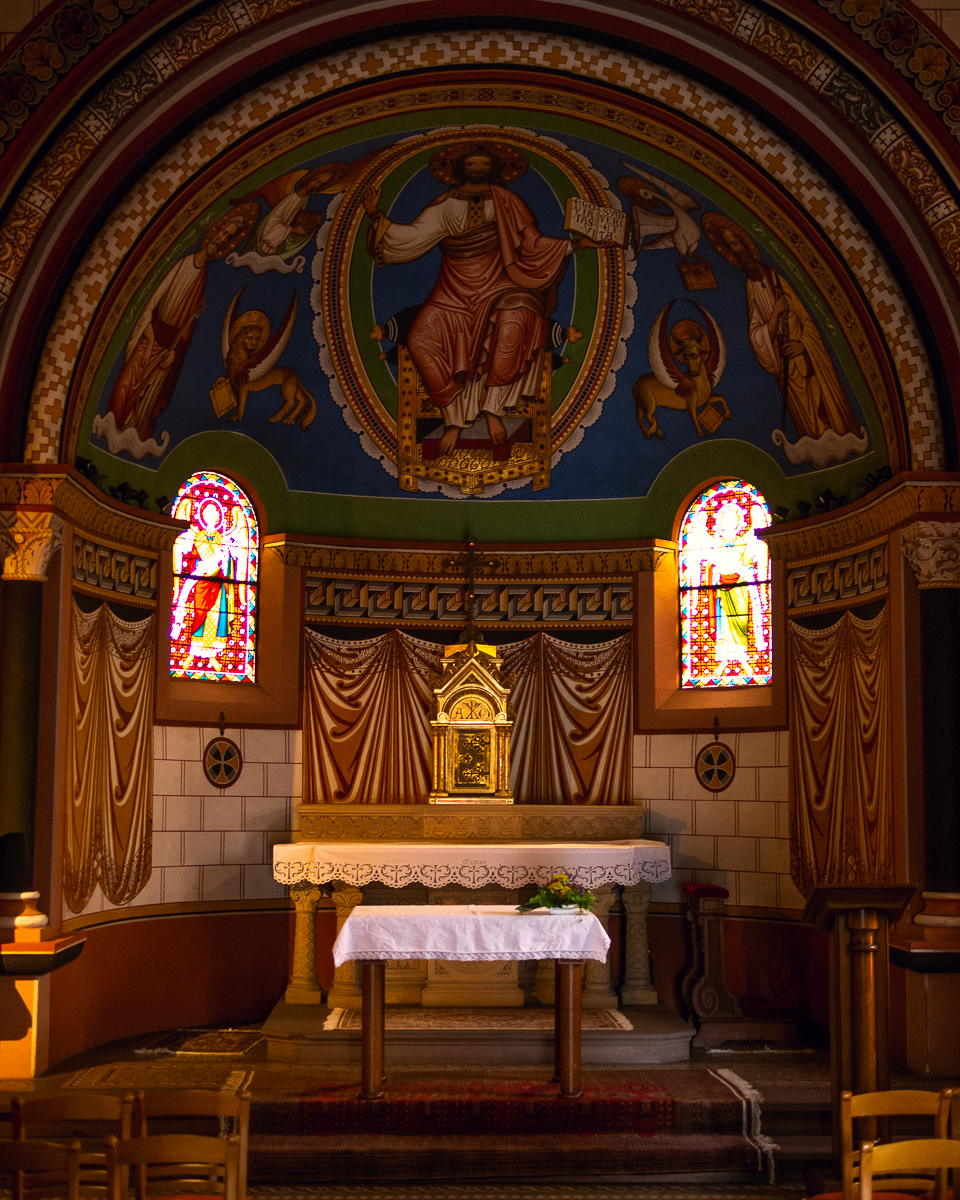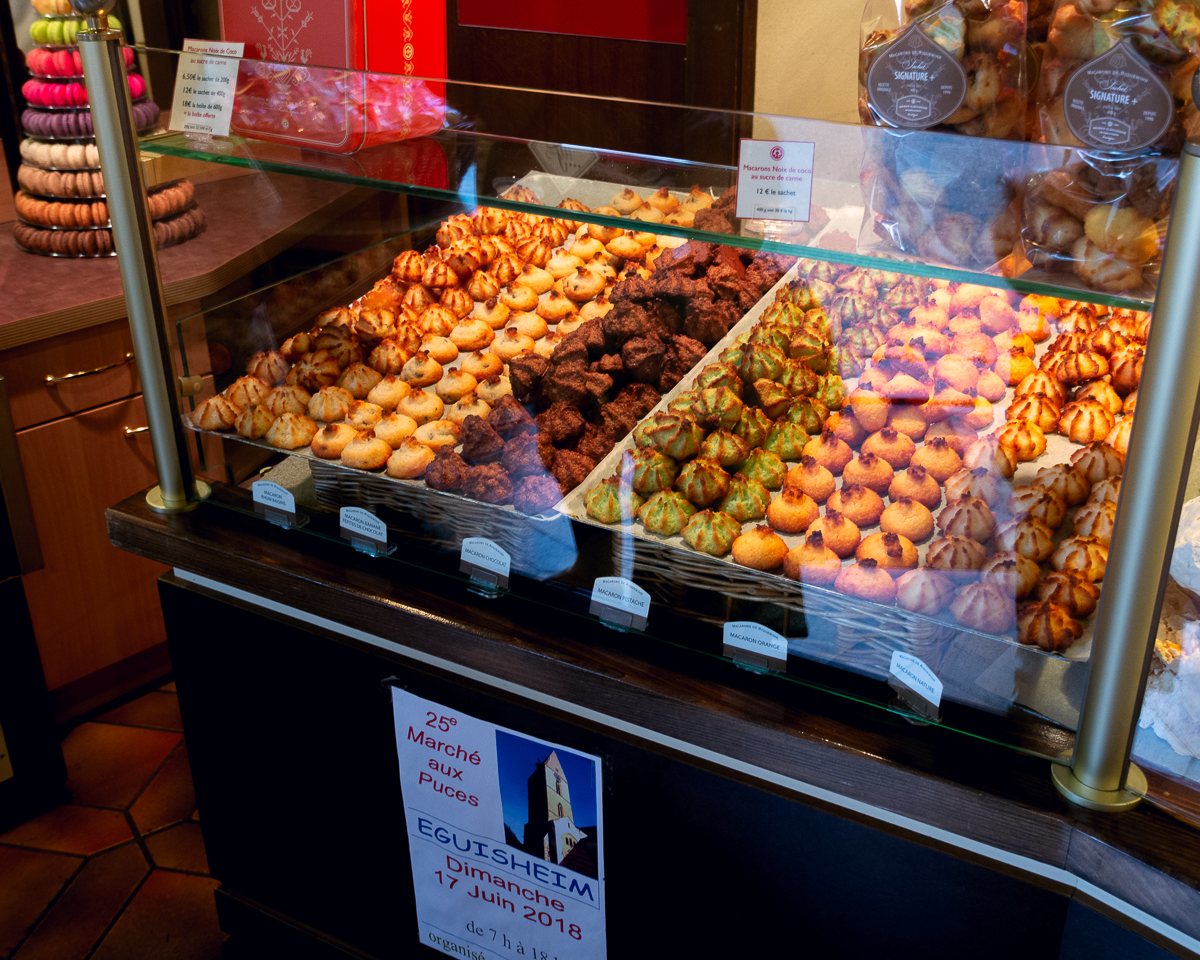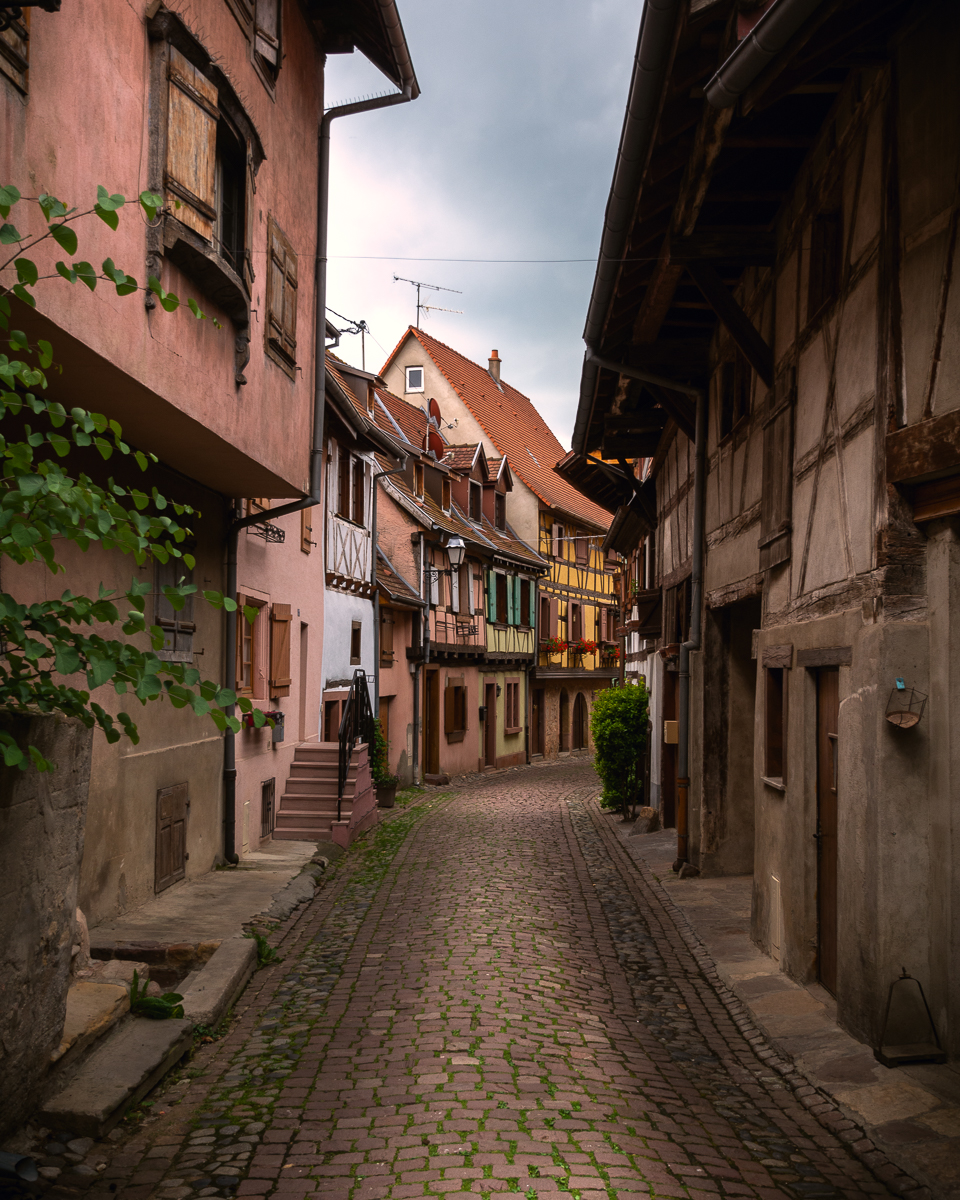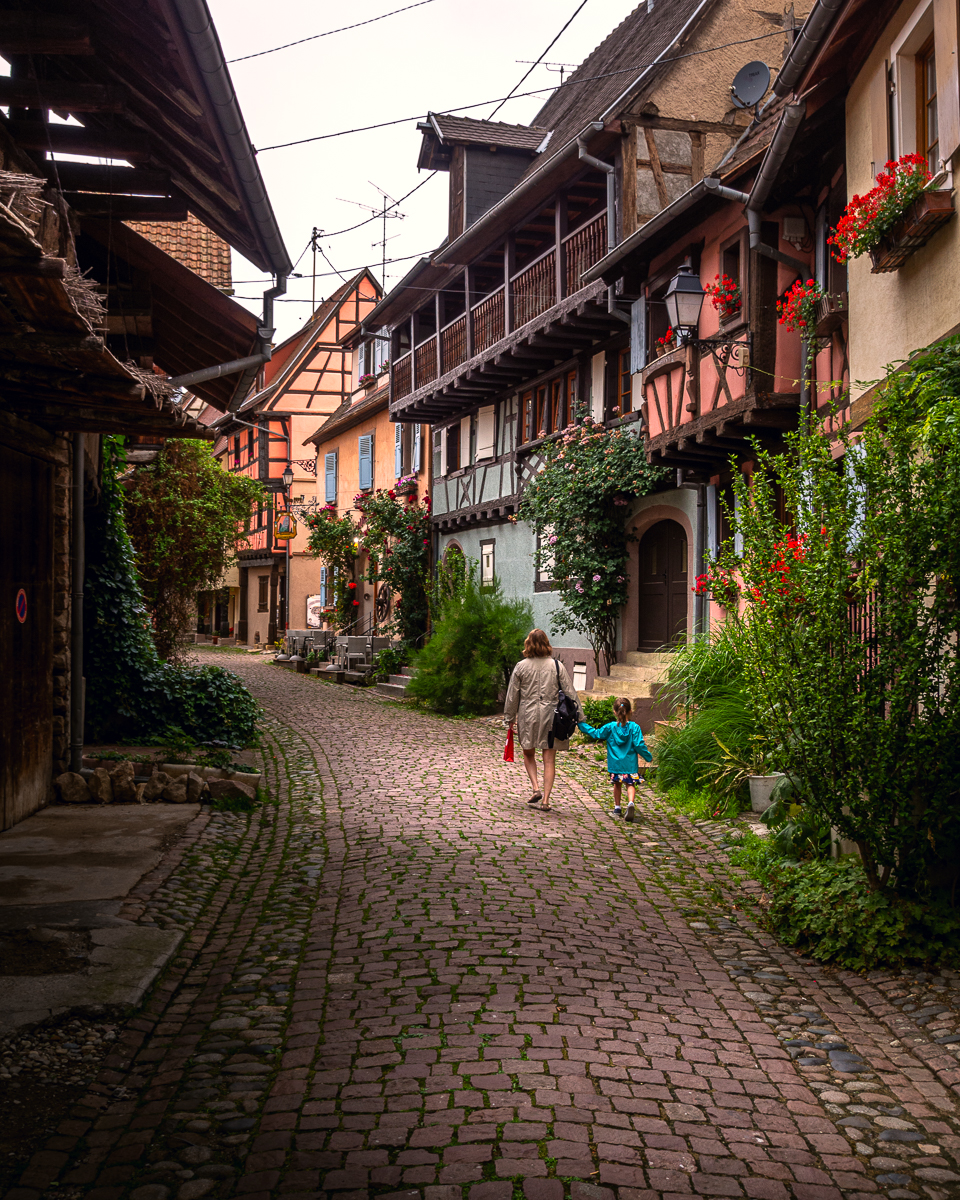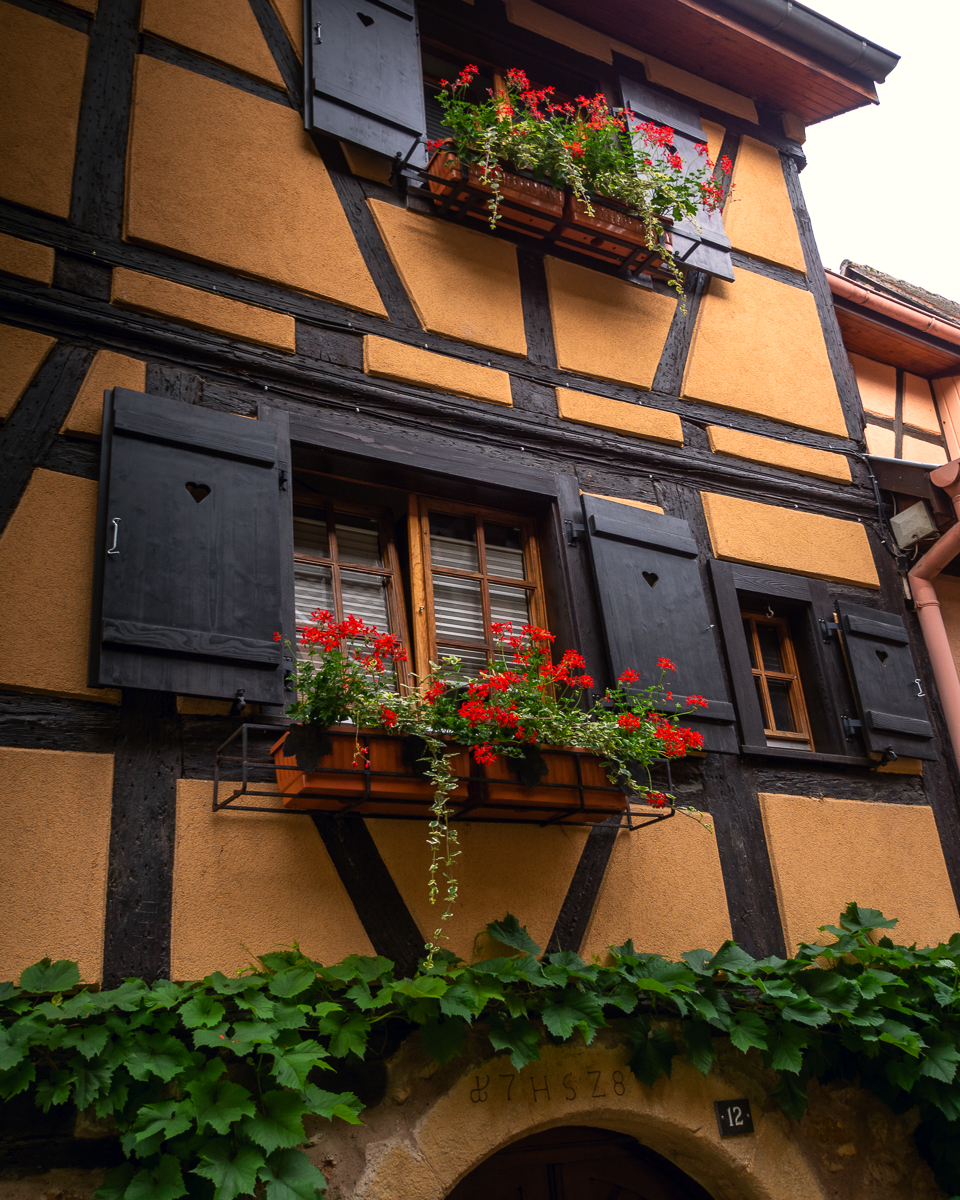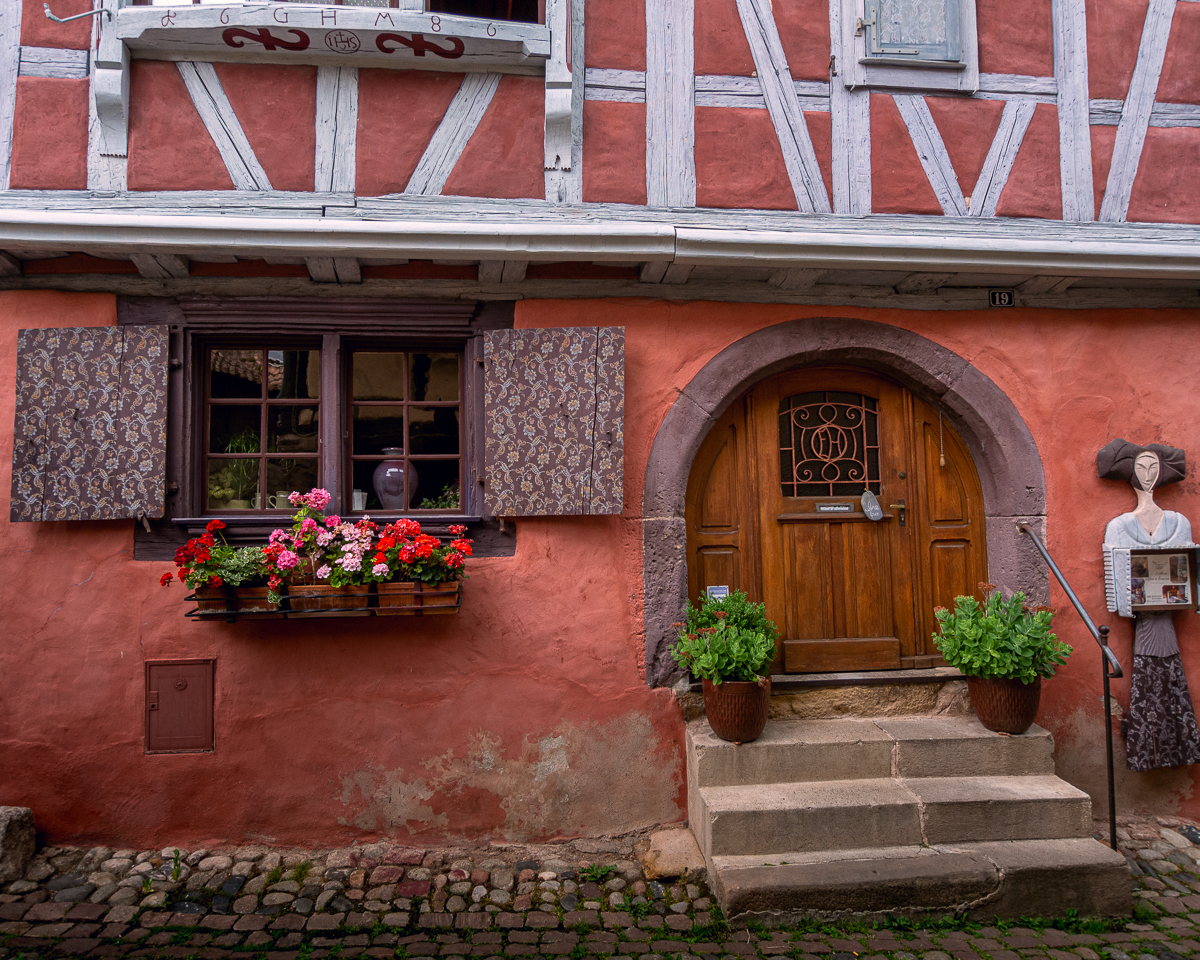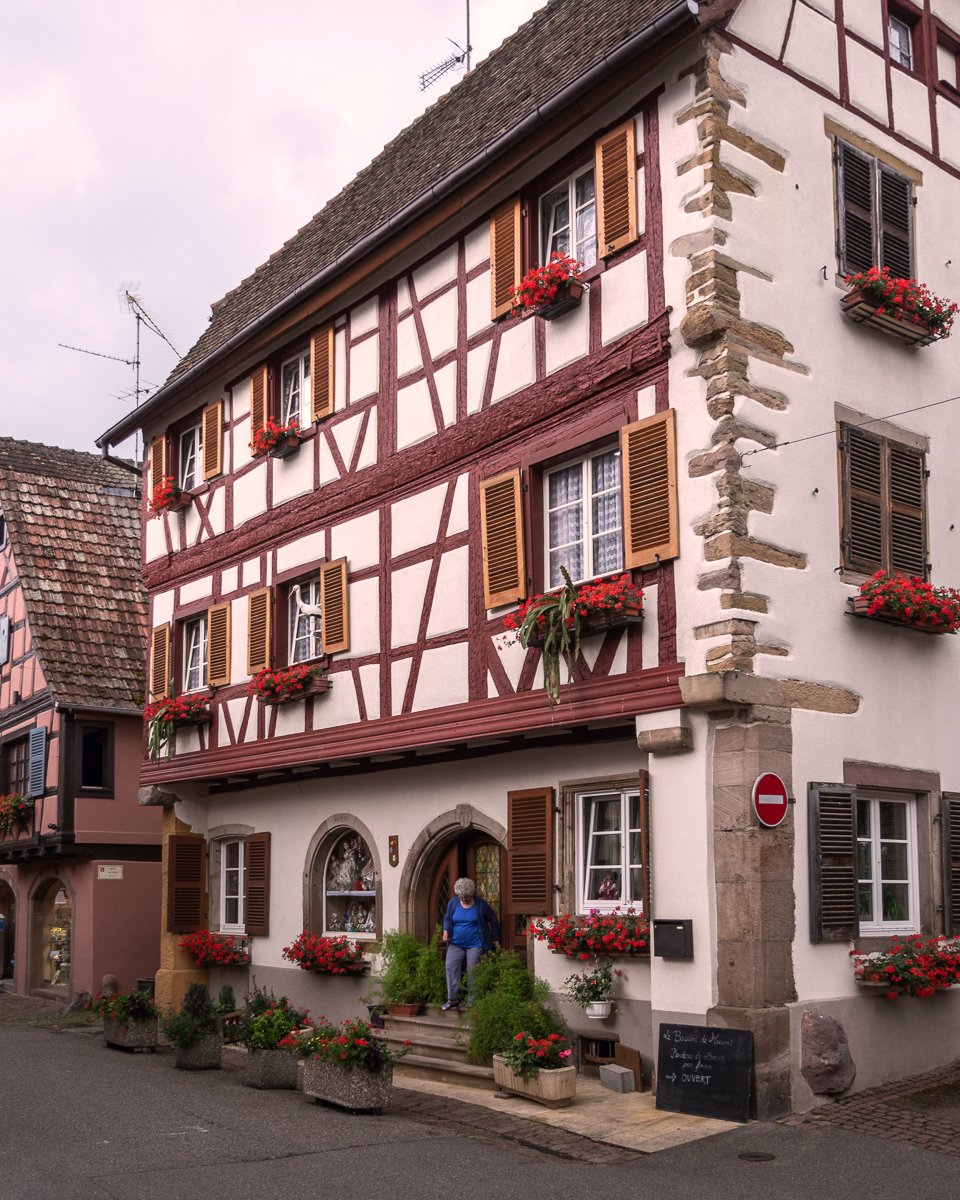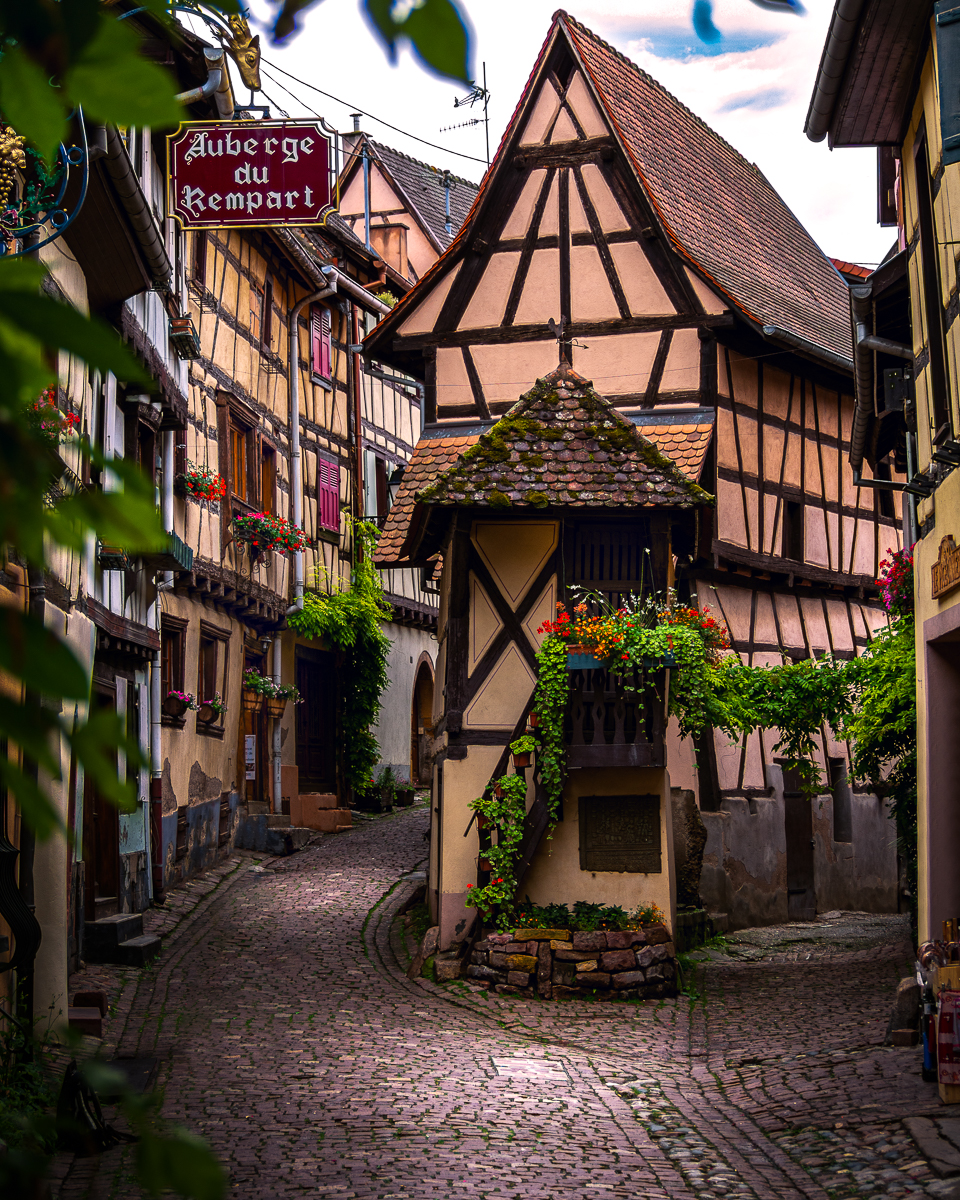 The furrow in my brow did nothing to resolve my perplexion, and I used it more as an desperate action than an expression of emotion. The stronger the scowl the sooner the problem would be resolved. We had been driving aimlessly around a modern and neglected neighborhood, and I was almost convinced the GPS had taken us to the wrong town.
The furrow in my brow did nothing to resolve my perplexion, and I used it more as an desperate action than an expression of emotion. The stronger the scowl the sooner the problem would be resolved. We had been driving aimlessly around a modern and neglected neighborhood, and I was almost convinced the GPS had taken us to the wrong town.
Shortly after we left Beaune the vineyards had quickly, and expectedly, vanished. The land was flat and very agrarian. To the west the Vosges Mountains grew out of the horizon and continued to gain height the farther north we drove. In time the vineyards would return, signifying that we were nearing Eguisheim, a small village that possessed a consensus of interest from all my research sources, just south of Colmar. The GPS had taken us as far as it could, but it was clear there was nothing of interest here. With my skepticism rising we eventually stumbled on what looked like a main street. I parked the car in the first open spot we came across and everyone was happy to stretch their legs and escape the confines of the car no matter where we were. Along the road there were growing signs of tourism. A few restaurants and small hotels popped up in finely-painted, half-timber buildings. We approached a sign that read “Les Plus Beaux Villages de France” – “The Most Beautiful Villages of France.” It was a bold statement, unexpected and certainly unearned thus far.
Beyond the sign were two concentric, contiguous, circular roads barely wide enough for even a small European car. The outer circle showed all the markings of some leftover depression of a long gone medieval wall and resembled a back alley. However, entering the inner circle was like passing through a portal to a time and place as fanciful and dreamy as a candy-coated land of fairytales. Irregular, dollhouse-sized buildings leaned too and fro and exposed their angular timber bones. The plaster in between was painted pale yellow, bright coral and earthen orange. Steeply-pitched roofs draped in heathered brown tiles rose over cascades of vining flowers under deep, Greek-blue shuttered windows. Flower boxes were built into the homes’ plaster along the street level. All of it was much more Germanic than French and much more Germanic than I ever expected.
It’s difficult to overstate the impossibly picturesque beauty of Eguisheim just like the sign promised. It’s adorable overload. Not a building looked younger than 500 years. At the soft candy center was a quaint square with a fountain and it was dominated by the smallest castle known to man. Within its ten-foot walls was what looked like a church that had been shrunk so dramatically that it nearly lost its usefulness. The interior was no larger than a small chapel. Yet it’s a church fit for a pope as this meagre hamlet produced one a thousand years ago and helped keep it on the map ever since. The whole complex does have me a bit suspicious as I can’t see it serving any real world use except to entertain children or keep out Lilliputian-esque marauders with its laughably useless arrow slits. Atop the comically sharp-pitched roof of the castle balanced a spherical mass of branches and sticks the size of a standard kitchen table. Popping out of the top was the head and body of a massive stork every bit as large as 7-year-old Lydia. As I studied the rooflines more intently I could see that the stork and nest were not alone. On the castle and church alone I counted four nests, each with at least one stork of its own and one with two. The stork has long been the proud symbol of Alsace. They were reintroduced after their numbers dwindled and are lovingly given nesting accomodations all over the region.

The confectionist-sculpted, gingerbread village looked good enough to eat. My first reaction was incredulity. It looked over-the-top, like someone got greedy when they dreamt it up and took it way too far. Like Walt Disney commissioned Hansel and Gretel to design it themselves. A skepticism befell me of the authenticity of what I was seeing. I first wondered if these were hollow facades of plywood and foam. I was pleasantly surprised to discover that they were in fact real, and old. They were constructed of stone and exposed ox-blood-soaked, wood-timber frames. Ancient symbols of trade appeared above doors along with numbers dating the structures like 1617.
There’s a stigma of inauthenticity that often surrounds restorations and, for dubious reasons, is a topic of my own obsession. This is a criticism I don’t subscribe to. It amazes me that anything cobbled together from wood and stone can survive three, four or five centuries. Of course there would need to be dutiful restoration, replacement and retrofitting. So what if in the process the walls are painted a brighter color or timber frames are later exposed? The only thing that could make it more real is if indoor plumbing and electricity were removed, open sewers added to the streets, stables and open manure piles moved in and the most foul of trades such as tanning, blacksmithing and butchery returned. If this were the case the village would be either condemned on sanitary grounds or classified as a living museum and thus also condemned as inauthentic. And those who live and work here must also be spared persecution. For example, the artisan baker on the corner may cater to tourists but is hardly running a tourist trap. His crime is to make his prized Christmas cookies year-round in order to offer his specialty to travelers at any time. He can’t be told he is not dedicated to his traditional craft because his clientele are of a different kind either. Without Eguisheim he’s still a French baker.








